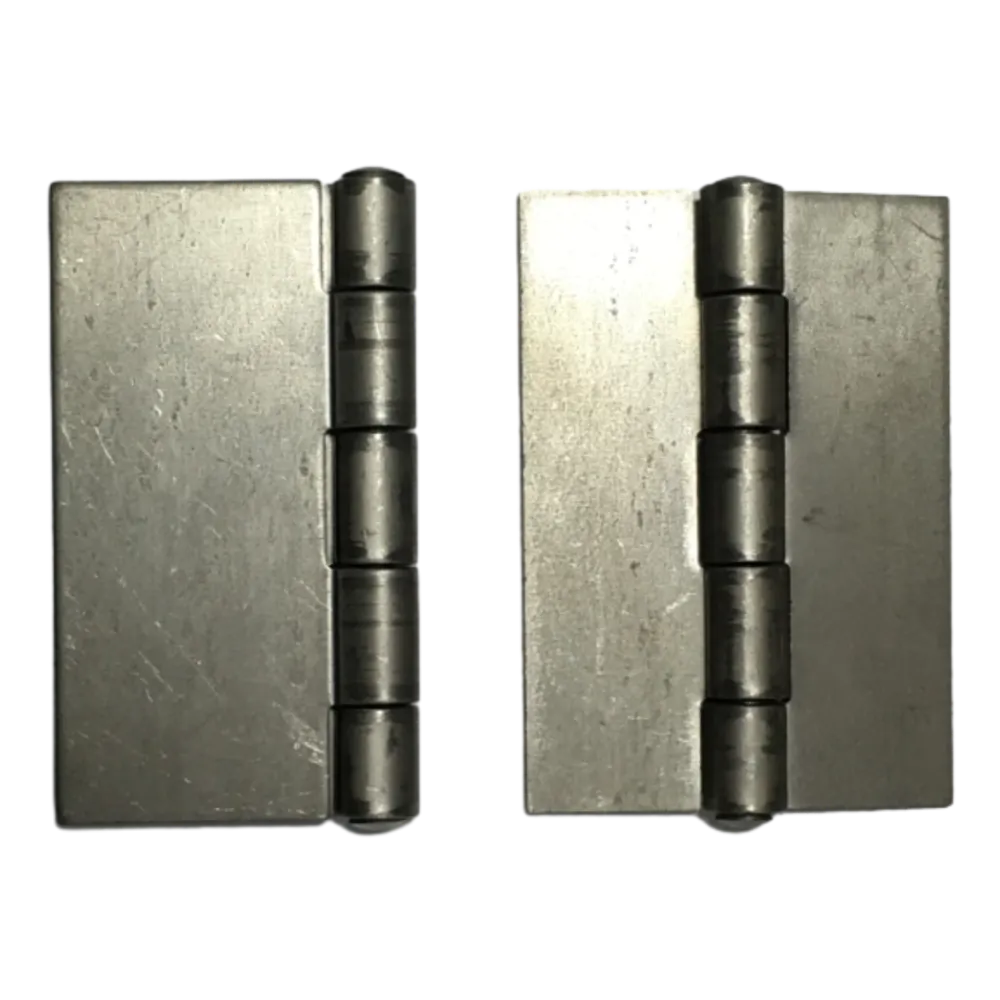Welding Hings
Hinges are mechanical devices that allow two objects, typically a door, gate, or window, to rotate or pivot relative to each other. Hinges consist of two plates (or "leaves") connected by a pin or pivot point. One plate is attached to the fixed frame, while the other is connected to the moving part, like a door or gate.
How Hinges Work:
Pivot Mechanism: Hinges function by providing a pivot point that allows one object to swing open or closed relative to another. The pin running through the center of the hinge acts as the axis of rotation, enabling the connected part to move in a controlled manner.
Types of Movement: Hinges can allow movement in one direction (as with most door or gate hinges), or multiple directions, depending on the type of hinge used.
Common Uses: Hinges are most commonly used on doors, gates, windows, cabinets, and other structures that require controlled movement. They provide both support and mobility, making them essential for opening and closing mechanisms.
In addition to basic functionality, hinges can also serve aesthetic and decorative purposes, especially in ornamental gate designs or custom cabinetry.
-
 Hinge
Barrel Hinge We offer a wide variety of Gate Hinges and hardware includingInquire Now
Hinge
Barrel Hinge We offer a wide variety of Gate Hinges and hardware includingInquire Now
What Are The Different Types Of Hinges, And Where Are They Used?
There are many types of hinges designed for specific applications, each offering different movement capabilities and support. Some of the most common types include:
Butt Hinges: These are the most common type of hinge used on doors. Butt hinges are made of two rectangular plates connected by a central pin. They are used in residential doors, cabinets, and gates, offering a simple, effective means of allowing movement.
Piano Hinges: Also known as continuous hinges, piano hinges run the full length of the door or lid they are attached to. These hinges are often used for piano lids, but they are also suitable for long cabinet doors or chests where even weight distribution is important.
Concealed Hinges: Often used in modern cabinetry, concealed hinges are hidden from view when the door is closed. These hinges are ideal for achieving a sleek, minimalist look in kitchens, bathrooms, and other spaces where aesthetics are important.
Pivot Hinges: Pivot hinges allow doors or windows to swing open from a central pivot point. These are often used in large glass doors or windows, as they provide a smooth, continuous motion and can support heavy loads.
T-Hinges: T-hinges are decorative hinges commonly used on gates, shed doors, and barn doors. They have a long, horizontal arm that provides added strength and support for heavy doors or gates.
Choosing the right type of hinge depends on the specific needs of the project, such as weight, movement direction, and aesthetic preferences.
How Do I Choose The Right Hinge For My Project?
Selecting the right hinge for your project depends on several factors, including the weight of the door or gate, the desired movement, and the material compatibility. Here are some key considerations:
Weight Capacity: Hinges come in different sizes and weight ratings. For heavy doors, gates, or windows, you’ll need heavy-duty hinges that can support the load without sagging or warping over time. For lightweight cabinets or interior doors, standard hinges will suffice.
Movement Direction: Consider how you want the door or window to open. Butt hinges or concealed hinges are suitable for standard swinging doors or gates, while pivot hinges are ideal for larger glass doors or windows that rotate from a central point. Continuous or piano hinges provide smooth motion for longer, heavier doors or lids.
Material Compatibility: The material of the hinge should be compatible with the structure it is attached to. For example, if you are installing a gate outdoors, it’s essential to use weather-resistant materials like stainless steel or galvanized steel. For interior applications, brass or chrome-plated hinges may be more appropriate for aesthetic reasons.
Aesthetic Considerations: Some hinges are purely functional, while others add decorative elements to the overall design. Ornate T-hinges, for example, are often used in rustic or industrial designs to add character to gates, barn doors, or cabinets.
Location (Indoor vs. Outdoor): Hinges used in outdoor settings need to be more robust and resistant to weather conditions. Materials like stainless steel, galvanized steel, and powder-coated finishes are ideal for withstanding the elements and preventing rust.
By assessing these factors, you can choose the right hinge to ensure durability, functionality, and aesthetic appeal for your project.




